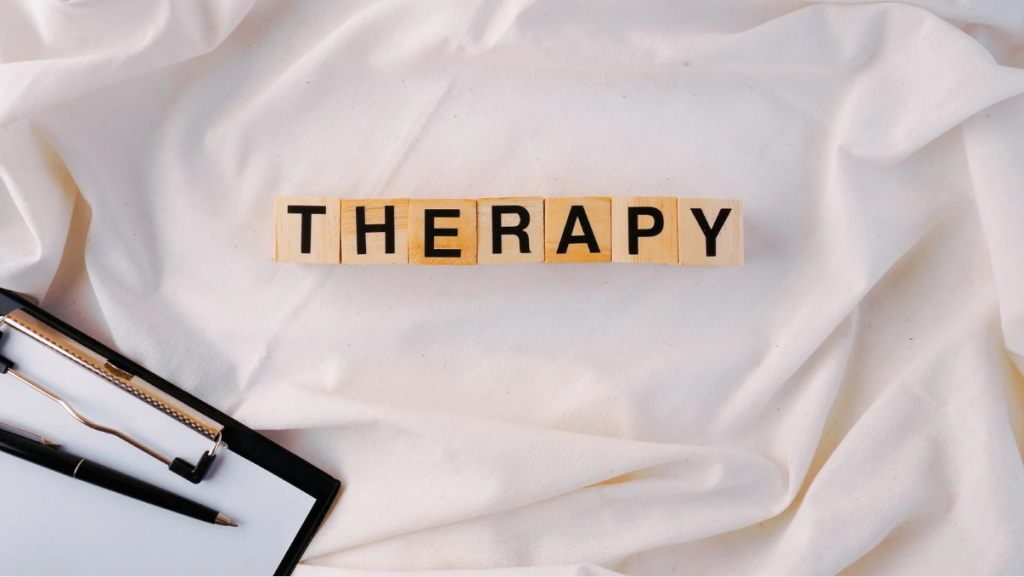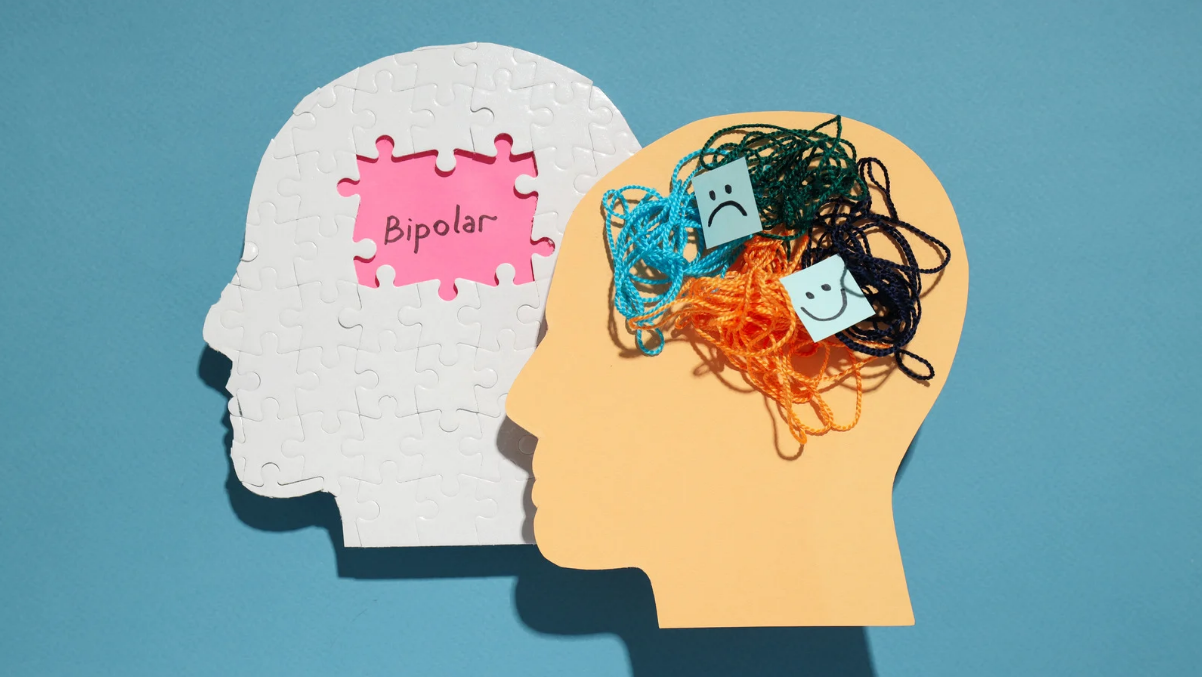Bipolar disorder in men often goes unnoticed, hidden behind societal expectations to “stay strong” and the tendency to misread symptoms as stress, anger, or burnout. This complex mental health condition is characterized by intense mood swings that range from emotional highs, known as mania or hypomania, to deep lows of depression, affecting how a person thinks, feels, and functions day to day. Recognizing the signs of bipolar disorder in men early is crucial—not only for maintaining mental stability but also for preserving relationships, work performance, and overall well-being. Because bipolar disorder impacts both mind and body, a combination of primary care and psychiatric evaluation is often essential for accurate diagnosis and effective treatment.
Let’s break down the signs, patterns, and behaviors that may indicate bipolar disorder in men—and when it’s time to reach out for professional help.
Breaking Down Bipolar Disorder and How It Affects Men
Bipolar disorder is a mental health condition that causes intense mood changes ranging from mania (emotional highs) to depression (emotional lows). These episodes can last days, weeks, or even months, and they affect how a person thinks, feels, and functions.
Types of Bipolar Disorder
- Bipolar I Disorder: Characterized by full manic episodes that may require hospitalization, followed by depressive episodes.
- Bipolar II Disorder: Involves hypomania (a milder form of mania) and more severe depressive episodes.
- Cyclothymic Disorder: A chronic pattern of fluctuating low-level hypomanic and depressive symptoms that last at least two years.
Why It’s Often Overlooked in Men
Men often experience and express emotions differently than women.
- Many are raised to suppress sadness or vulnerability.
- They may attribute mood changes to work stress, financial pressure, or fatigue.
- Some cope with substance use or risky behavior instead of seeking professional help.
These factors contribute to underdiagnosis and delayed treatment, even though bipolar disorder affects an estimated 2–3% of men worldwide.
Common Signs of Bipolar Disorder in Men

Bipolar disorder doesn’t look the same for everyone. The symptoms vary depending on the phase — manic, depressive, or mixed — and how intensely they’re experienced. Here’s how they typically appear in men:
1. Signs of Mania or Hypomania
During a manic or hypomanic episode, men may feel unstoppable, energetic, or overly confident. It’s not just feeling “good” — it’s an unnatural surge in energy that disrupts judgment and balance.
Common signs include:
- Increased energy or restlessness, often leading to overactivity.
- Irritability or short temper without clear cause.
- Racing thoughts and rapid speech that jumps between topics.
- Impulsive decisions — such as spending sprees, risky investments, or reckless driving.
- Decreased need for sleep but still feeling energized.
- Inflated sense of confidence or invincibility (“I can do anything”).
- Risky sexual behavior or unusually high sex drive.
- Overcommitting to projects or grand ideas that quickly fizzle out.
While these behaviors might seem “productive” or “motivated” at first, they often spiral into exhaustion, regret, and interpersonal conflicts once the manic phase ends.
2. Signs of Depressive Episodes
After mania often comes the crash — a depressive episode that feels like emotional and physical shutdown. For men, depression can look different than the stereotypical image of sadness.
Common depressive symptoms include:
- Persistent sadness, hopelessness, or emotional numbness.
- Fatigue or lack of motivation to work, socialize, or care for oneself.
- Trouble concentrating or making decisions.
- Feelings of guilt, worthlessness, or failure.
- Withdrawal from family and friends.
- Changes in appetite or significant weight changes.
- Oversleeping or insomnia.
- Suicidal thoughts or feelings of emptiness — which require immediate professional help.
Men may not always express depression with tears; instead, they may become quiet, irritable, or detached, making it easy for loved ones to miss the warning signs.
3. Anger, Irritability, and Aggression
One of the most misunderstood symptoms of bipolar disorder in men is anger.
While women often exhibit emotional lows more visibly, men may channel distress into irritability or aggression.
- Frequent anger outbursts or frustration over small issues.
- Verbal or physical aggression.
- Road rage or confrontational behavior.
- Feeling “on edge” or restless most of the time.
These reactions can strain relationships, damage careers, and lead to guilt once the episode subsides. Recognizing this pattern as a possible symptom of bipolar disorder, not just “bad temper,” is key to early intervention.
4. Substance Use and Self-Medication
Men with bipolar disorder may turn to alcohol, drugs, or nicotine to calm their highs or numb their lows. Unfortunately, self-medicating only worsens symptoms over time.
- Alcohol may temporarily relax manic energy but increases depressive crashes.
- Stimulants or caffeine intensify mania and insomnia.
- Substance use can mask symptoms, making diagnosis harder.
5. Relationship and Work Challenges
Bipolar disorder affects not just mood but also communication, consistency, and trust.
- Rapid mood changes can create confusion or tension in relationships.
- Impulsivity or withdrawal can lead to strained marriages, financial issues, or job instability.
- During manic phases, men might overcommit or take on too much; during depressive phases, they may withdraw entirely.
These cycles can be emotionally draining for everyone involved — but they’re also treatable once recognized.
How Bipolar Disorder Differs in Men vs. Women

While bipolar disorder affects both men and women, the way it shows up can differ.
In men:
- Manic episodes tend to appear earlier and more intensely.
- Irritability, anger, and risk-taking are more common.
- They’re often diagnosed later, after years of misinterpreted symptoms.
- Men are more likely to experience substance use alongside bipolar disorder.
In women:
- More frequent depressive episodes.
- Greater emotional awareness and willingness to seek help.
- More likely to be misdiagnosed with depression before bipolar disorder is identified.
Recognizing these gender differences helps tailor treatment and communication approaches for better outcomes.
When It’s More Than Mood Swings: Recognizing Red Flags
It’s normal to experience emotional ups and downs. But bipolar disorder involves extreme shifts that disrupt your life, energy, and functioning.
Red flags that suggest it might be bipolar disorder include:
- Mood changes lasting days or weeks rather than hours.
- Sudden shifts between confidence and hopelessness.
- Impulsive decisions followed by regret.
- Disrupted sleep patterns or erratic energy levels.
- Repeated problems in relationships, finances, or work due to mood changes.
If these patterns sound familiar, it’s important not to self-diagnose but to speak with a primary care or mental health professional who can help clarify what’s happening.
The Importance of Early Diagnosis and Treatment
The sooner bipolar disorder is diagnosed, the better the long-term outcome. Untreated bipolar disorder can lead to:
- Severe depression or suicidal thoughts
- Substance addiction
- Financial or legal problems
- Strained relationships
- Physical health complications from chronic stress or poor lifestyle habits
Primary care providers often play a key role in identifying early signs and connecting patients to psychiatric care. Together, they can create a plan that treats both mental and physical health — improving mood stability, sleep, and overall quality of life.
How Bipolar Disorder Is Diagnosed in Men

Diagnosis involves several steps to ensure accuracy and safety:
1. Comprehensive Evaluation by Primary Care
Your primary care provider will:
- Review symptoms and personal history.
- Rule out medical causes (e.g., thyroid disorders, sleep apnea, medication side effects).
- Evaluate for co-existing issues like anxiety or substance use.
2. Psychiatric Assessment
A psychiatrist will conduct a clinical interview to understand your mood cycles, triggers, and family history.
You may also complete screening tools like the Mood Disorder Questionnaire (MDQ) or a bipolar spectrum checklist.
3. Monitoring Over Time
Because symptoms can fluctuate, ongoing observation is key.
Mood tracking (through apps or journals) helps professionals identify patterns and make an accurate diagnosis.
Treatment Options for Men with Bipolar Disorder

Managing bipolar disorder involves more than medication — it’s about building stability, insight, and balance across all aspects of life.
1. Medication Management
Medications are often essential for controlling mood swings and preventing relapse.
- Mood stabilizers like lithium or valproate help regulate extreme highs and lows.
- Antipsychotics may control manic or mixed symptoms.
- Antidepressants can be used carefully, as they sometimes trigger mania.
Because men metabolize certain drugs differently, personalized medication management — guided by both primary care and psychiatry — ensures safety and effectiveness.
Regular check-ups, lab monitoring, and communication between your medical providers support long-term health.
2. Psychotherapy and Counseling
Therapy helps men understand triggers, regulate emotions, and rebuild routines.
- Cognitive Behavioral Therapy (CBT): Teaches coping skills and mood awareness.
- Interpersonal and Social Rhythm Therapy (IPSRT): Focuses on stabilizing daily routines and sleep cycles.
- Family or couples therapy: Strengthens communication and support systems.
Therapy also addresses stigma — helping men feel more comfortable discussing their emotions without shame.
3. Lifestyle and Self-Management Strategies
Healthy routines can make a dramatic difference.
- Sleep: Maintain a consistent schedule (avoid sleep deprivation, which can trigger mania).
- Exercise: Regular physical activity supports brain chemistry and stress relief.
- Nutrition: Balanced meals prevent energy crashes.
- Stress management: Mindfulness, deep breathing, or journaling help regulate mood.
- Avoiding substances: Reduces risk of relapse and improves medication effectiveness.
Primary care teams can guide men on managing cholesterol, weight, and blood pressure — areas often affected by psychiatric medications.
4. Integrative and Holistic Support
At our clinic, we believe mental and physical health are inseparable.
We combine psychiatric treatment with primary care follow-ups to ensure complete well-being — addressing side effects, nutrition, sleep, and stress.
This integrated model helps men regain stability and confidence in their everyday lives.
When to Seek Help — and Where to Start

It’s time to reach out for professional help if you:
- Notice extreme or frequent mood swings.
- Experience thoughts of suicide or hopelessness.
- Use alcohol or drugs to manage emotions.
- Struggle to maintain relationships or work stability.
Start by contacting your primary care provider. They can rule out physical causes and connect you to psychiatric services for further evaluation and treatment.
If you or someone you love has suicidal thoughts, seek help immediately — call your local emergency line or a mental health crisis helpline.
Final Thoughts: Your Mental Health Is Part of Your Whole Health
Bipolar disorder does not define who you are — it’s a treatable medical condition, not a personal weakness. Recognizing the signs and seeking help is a powerful act of courage that can change your life for the better.
At Stay Healthy! LLC, we believe that lasting wellness begins with whole-person care — nurturing both your physical and mental health. Our compassionate primary care and psychiatric teams work together to design personalized treatment plans that support emotional stability, improve daily functioning, and restore confidence.
If you’ve been experiencing intense mood changes, persistent sadness, or periods of overwhelming energy, now is the time to reach out. Stay Healthy! LLC is here to help you find balance, healing, and hope. Take the first step toward better mental and physical well-being — contact us today and start your journey to a healthier, more stable life.











